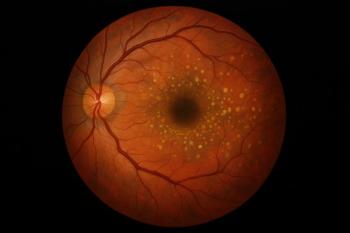
Cancer Drugs Spark Surprising Improvement in PAH Symptoms
New anecdotal evidence suggests some chemoimmunotherapy treatments may improve pulmonary arterial hypertension symptoms, but the overall evidence remains murky.
A case report of a patient whose pulmonary arterial hypertension (PAH) symptoms improved while receiving treatment for metastatic lung adenocarcinoma is raising questions about whether — and why — chemotherapy and immunotherapy might have a positive influence on the efficacy of PAH drugs.
Zeenat Safdar, M.D., M.S., of Houston Methodist Hospital, and colleagues
The patient was a 52-year-old woman with a medical history of connective tissue disease-associated PAH, CREST (calcinosis, Raynaud phenomenon, esophageal dysmotility, sclerodactyly, and telangiectasia) syndrome, interstitial lung disease and ulcerative colitis. She sought care after experiencing shortness of breath, fatigue and bone pain. Subsequent CT and PET imaging led to a diagnosis of stage 4 lung adenocarcinoma with 5% of tumor cells expressing programmed death-ligand 1 (PD-L1). She was negative for EGFR/ALK gene alterations.
At the time, the patient was taking triple therapy for PAH: Uptravi (selexipag), Opsumit (macitentan), and Adempas (riociguat).
For her cancer, she was started on carboplatin and Alimta (pemetrexed) and after, one cycle, immunotherapy with Keytruda (pembrolizumab) was added. Her cancer treatments were successful, although the adverse effects of chemotherapy later led her doctors to switch to single-agent therapy with Keytruda. When she discontinued cancer therapy about seven months after initiation, there was no evidence of active malignancy. For an additional 18 months of follow-up she appeared to be free of cancer.
Her cancer was not the only disease that improved.
After a month on both neoplastic and PAH therapy, the patient showed signs of improved PAH symptoms, including improvement in her six-minute walking distance (6MWD) and functional class I symptoms. The improvement allowed her to return to work as a teacher, Safdar and colleagues reported. Her symptoms continued to improve, and echocardiograms showed improved cardiac output/cardiac index, a normal right atrium size and mild depressed right ventricular function.
Things changed, though, when her immunotherapy was stopped. Despite continuing PAH triple therapy, the patient’s condition worsened according to multiple PAH parameters. Eventually, doctors replaced Adempas with Viagra (sildenafil) and later administered intravenous Flolan (epoprostenol). She died in September 2022, a little more than two years after starting her cancer therapy, from respiratory failure with severe right-sided heart failure.
Safdar told Managed Healthcare Executive that when clinicians were first deciding how to treat the patient’s cancer, her underlying PAH was an influential consideration.
“Antineoplastic drugs with less cardiovascular side effects were chosen,” she said.
Yet, rather than exacerbate the patient’s PAH, Safdar and colleagues said they now believe the patient’s cancer therapy “may have a positive effect on the vascular remodeling seen in PAH.”
One possible reason, they said, is that chemotherapy and immunotherapy increases expression of the FOXO1 transcription factor in pulmonary arterial smooth muscle cells (PAMSCs), which they said may modulate “reverse remodeling” in the PAMSCs.
“In various cancer models, FOXO1 has been shown to inhibit TGFβ‐induced epithelial‐to‐mesenchymal transition (EMT), rendering enhanced epithelization of cancer cells, reduced metastatic capacity, and likely increased chemosensitivity,” Safdar and colleagues wrote. “We theorize that this reverse remodeling modulated by FOXO that is exhibited in cancer cells may be present in PASMCs.”
Although there have been some reports suggesting chemoimmunotherapy may influence remodeling, the researchers wrote taht it was not possible to know for certain what influence the patient’s cancer drugs had on her PAH.
Safdar told Managed Healthcare Executive, however, that Gleevec (imatinib) has been investigated as a therapy for PAH. It was found to be efficacious, she said, but has serious side effects. More recently, she said, an inhaled version of imatinib was studied in PAH, but the study was
“Other than that, there is no convincing data on the use of antineoplastic meds as therapy for PAH in humans,” she said.
Ironically, one drug from the same class as imatinib, Sprycel (dasatinib) has PAH listed as a
Still, Safdar said overall there is conflicting data on antineoplastic medications in PAH. She said more investigation will be needed to clarify what benefits, if any, come from cancer therapies in patients with PAH.
Newsletter
Get the latest industry news, event updates, and more from Managed healthcare Executive.




















































